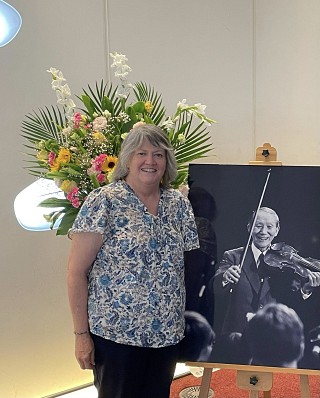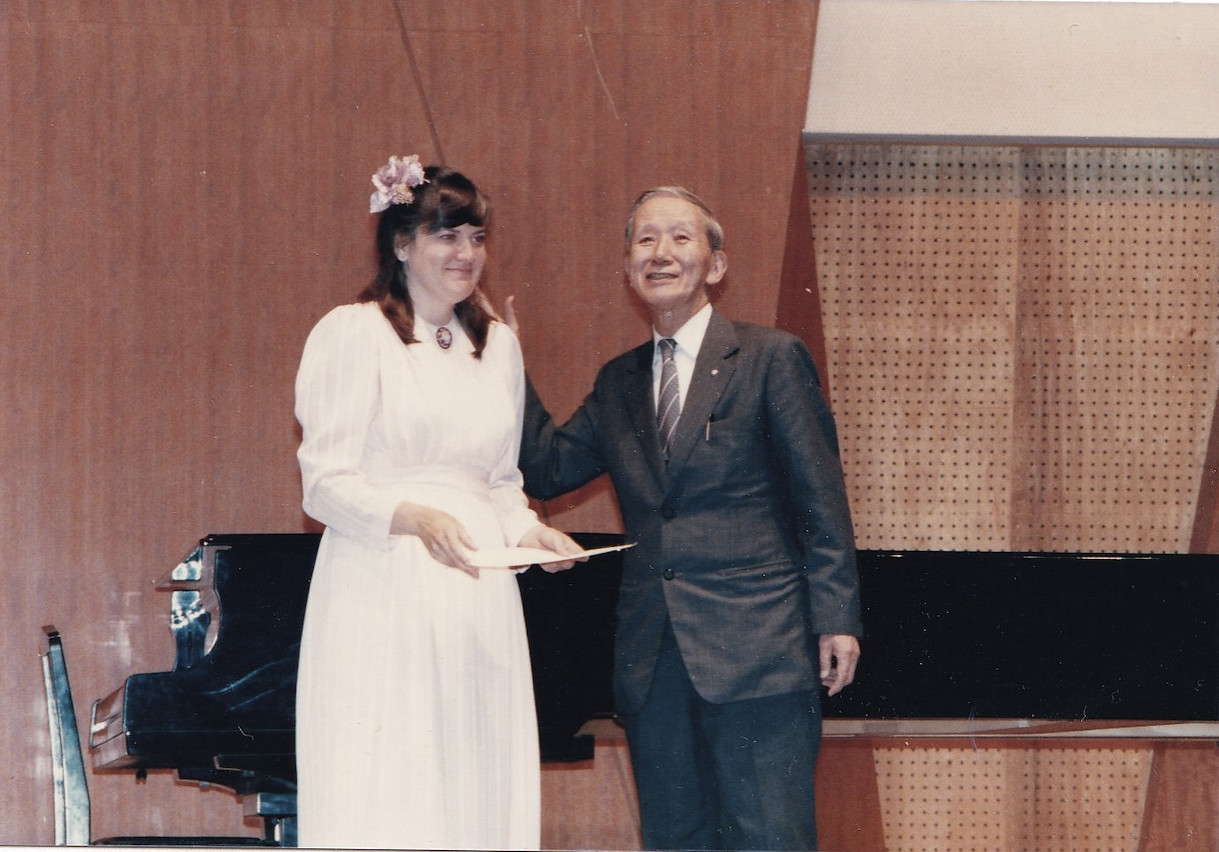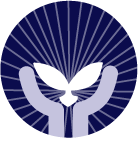Rhonda Harrison-Shimano

Rhonda's passion lies in nurturing young talents using Dr. Suzuki's mother-tongue philosophy, which she applies in two distinct domains. As a Suzuki violin instructor for a fabulous group of children in Matsumoto, Japan, she shares the art of music while integrating Dr. Suzuki’s philosophy into her teaching. Similarly, at Shirayuri Kindergarten, a Suzuki-based kindergarten in Matsumoto, Rhonda teaches English to preschoolers aged 3 to 6 by infusing the same “mother-tongue” principles into her approach. Her commitment extends beyond the classroom as she actively supports TERI by bridging linguistic barriers, in order to continue to globally disseminate Dr. Suzuki’s teachings and philosophy.
Name in Japan: Rhonda Harrison
Other places lived since Japan: Florida, USA
Instrument studied in Japan: Violin
Dates in Japan:
- 1983-1985 - First studied with Shinichi Suzuki
- 1985-1988 - Several one-month visits
- 1988-1990 - weekly lesson
Memories
Ever since I received a request to write a personal story about my memories of Dr. Suzuki and how my journey to Japan to study under him shaped my life, I have been grappling with the enormity of the task. My mind teems with a plethora of cherished memories, enough to fill volumes. The challenge, however, lies not just in selecting the most profound ones to share, but also in reflecting on how this journey – this first trip to Japan that led to my return post-graduation and subsequent life here – has unfolded unpredictably. In deciding what to write, I turned to the list of ideas kindly outlined by Amanda Schubert, starting with the question, "What made you decide to go to Japan for a long period of time?"
Although I didn't grow up with the Suzuki Method, my journey into music education, specifically violin coupled with a concentration in early childhood education, sparked a profound curiosity in me about this unique approach. I was committed to reading and understanding as much as I could, even with the challenge of accessing the vast literature on the Suzuki Method, given the absence of services like Amazon in the 80s. The real gateway to the Suzuki Method, however, was through my encounters with its pioneers, Clifford Cook and Bruce Anderson, during my independent study working towards my senior thesis. Clifford Cook, retired at the time, joyously engaged with my countless questions. Bruce Anderson, fresh from his studies in Japan, was eager to share his experiences. It was in their passionate encouragement that I found the motivation to go to Japan. They were convinced that studying with Dr. Suzuki in Matsumoto was the most and only authentic way to understand the Suzuki Method. The two assisted in arrangements for me to study with Shinichi Suzuki and Yuko Mori. Initially, with no time goal set, my plan was to stay for six months. However, I found myself absorbed in the learning and stayed on, graduating in 1985 after an enriching two-year journey into the heart of the Suzuki Method.
After returning to the States, I started my own Suzuki violin program. Yet, I was left with lingering questions, prompting me to make frequent one-month trips to Matsumoto whenever I saved enough money to afford them. With help from my strong network of friends, lodging arrangements were simplified. A few years later, I married one of these friends and permanently relocated to Japan.
Although my husband's work was not based in Matsumoto, its accessibility via a short train ride made it possible for me to continue my weekly lessons with Dr. Suzuki. I also observed Ms. Mori's classes and the Yoji-Gakuen kindergarten. One day, following a wonderful day at the kaikan, Dr. Suzuki asked me to follow him to the office and requested to have me registered as a teacher in Japan. With the numerous excellent Suzuki teachers in Japan, I never envisioned teaching violin there. I agreed to register, with no intent to teach violin, but rather apply the Suzuki philosophy to teaching English instead.
Dr. Suzuki, however, had a keen sense of insight that felt like he could see into your heart and mind. At my lessons, he would inquire about my students' progress. In my response, I reassured him that my students were progressing well, conveniently omitting the fact that the students I was referring to were my “English” students and not my “Violin” students. But he seemed to sense that I was not teaching violin. When he asked me to bring my students for a lesson and I hesitated in my response, a look of sadness crossed his face. He said, "Damé, I asked you to teach violin, and you didn't follow my request." His words struck a chord in me, and realizing not teaching violin would hurt the teacher I had the most respect for, I promptly started teaching a few violin students.
Initially, the plan was to relocate to the States after my husband completed his residency. However, he became deeply engrossed in his work, and I found immense satisfaction in my weekly lessons with Dr. Suzuki and teaching a small group of students, which eventually included my own three children. My objective was to absorb as much information as possible so that upon my return to the States, I could assist other teachers and parents who did not have the opportunity to study in Japan. As I had once been uncertain about the true essence of the Suzuki Method before I came to Japan, I wished to help others understand Dr. Suzuki's educational goals and his valuable insights on violin playing.
As time passed, the idea of returning to the States became less feasible, but another avenue to assist those interested in the Suzuki Method unfolded. At the time that Dr. Suzuki stopped going into the school regularly, Waltraud Suzuki was struggling to read all the materials and letters sent from around the globe. I began visiting their home to read them alongside her, and together, we searched for relevant materials and composed reply letters. This process deepened my understanding as we investigated answers to various queries. A delightful addition to these visits was when Waltraud would invite my daughter to play her violin. Dr. Suzuki, listening from another room, would occasionally come out to teach her. His love for children made it seem as if just their presence filled him with joy, and hearing the sound of their music brought him even greater joy. He passed away when my daughter was seven. The last piece she played for him was Humoresque, a piece he loved using to teach "Suzuki Tone". Following Dr. Suzuki's passing, I continued my reading sessions with Waltraud. The added privilege during those times was the opportunity to listen to her countless stories about Dr. Suzuki.
One particular episode from when I was studying with Dr. Suzuki that I often recall and share with my students stands out in my memory. Dr. Suzuki would frequently walk through the building announcing, "New Idea!" as he gathered everyone for a group lesson to share this "new playing point." His dedication to aiding others in enhancing their playing skills was ceaseless. And he was always thinking of new ways to develop basic skills.
On one occasion, Dr. Suzuki's secretary at the time, Michiru Hotaka, was frantically darting around the kaikan. Michiru, known for her constant bustling, would sprint up and down the stairs. Many would advise her to slow down, and she would humorously obey before resuming her quick pace. One day, she seemed particularly anxious as she dashed about and searched in every room. One other kenkyusei was with me, though I regret that I don't recall who it was. Michiru approached us to inquire if we had seen Dr. Suzuki. We told her that we had not seen him. But as she walked past us again, we asked her if we could help. She responded in a small rather joking tone of voice, “I lost Dr. Suzuki.”
Michiru clarified that he had not gone anywhere by car, so he could not be too far. The coffee shop down the street where he often visited had not seen him, and his violin was also missing. After checking all the rooms again, we ventured together to the other building. Upon entering the building, we heard someone continuously playing the same note. Approaching the source of the sound, Michiru knocked and entered the room, finding Dr. Suzuki inside.
As we accompanied Dr. Suzuki back to the kaikan, he explained that he had spent perhaps an hour there, absorbed in the study of a single note. By playing this note in countless ways, he was exploring all the incorrect methods of playing it to understand why they weren't effective. That day, he shared a vital insight: a teacher shouldn't merely know how to play and instruct students to emulate them, but should also comprehend the variety of ways that could work, along with those that would not, and the reasons behind these distinctions.
"Suzuki Philosophy" and "Suzuki Tone" distinctively mark the Suzuki Method, and I was privileged to observe firsthand how Dr. Suzuki pursued the elusive "Suzuki Tone." Among my numerous cherished memories of Dr. Suzuki, this one stands out, primarily because it's a lesson I regularly share with my students. If you dedicate time to scrutinizing a single note, identifying all the ways it can go wrong with both the left and right hands, you will comprehend why your aim should always be the way that yields the most excellent tone, intonation, and vibrato.
Looking back at my journey, it's clear how serendipitous circumstances and choices led me down an unexpected yet fulfilling path. The decision to study under Dr. Suzuki was not just about mastering the violin or a teaching method. It was an exploration of a philosophy that profoundly impacted my understanding of education, while also shaping my life and perspective on the world. The invaluable lessons I learned, the wisdom I absorbed, and the unique experiences I had with Dr. Suzuki have continued to guide my teaching journey. My commitment now is to perpetuate his teachings, sharing the essence of the Suzuki Method with aspiring musicians and educators. As I reflect on my time with Dr. Suzuki, I feel a deep gratitude for the opportunity and a heightened responsibility to carry forward his legacy, reminding myself, and others, of the importance of patience, commitment, and above all, the joy of making music.
Photos in Japan

Rhonda Harrison-Shimano with Dr. Suzuki at Graduation in 1985

After returning to Japan, 1989, Left to Right: Rhonda, Waltraud Suzuki, Shinichi Suzuki

